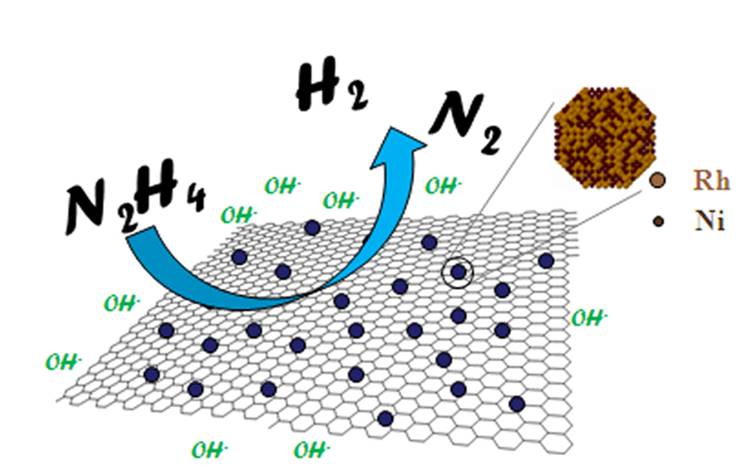A.6 Nanotechnology
Written specifically for students to provide help and support for the IB Diploma chemistry programme this page provides full coverage of the syllabus content of Option A - sub topic A.6. It encourages you to think critically and provides many questions with full worked answers so that you can monitor and improve your knowledge and understanding.


 Learning outcomes
Learning outcomes
After studying this topic you should be able to:
 Understand:
Understand:
- Molecular self-assembly is the bottom-up molecular-self assembly of nanoparticles. It can occur by selectively attaching molecules to specific surfaces. Self-assembly can also occur spontaneously in solution.
- Among the possible methods of producing nanotubes are arc discharge, chemical vapour deposition (CVD) and high pressure carbon monoxide (HIPCO).
- Arc discharge either involves vaporizing the surface of one of the carbon electrodes, or discharging an arc through metal electrodes submersed in a hydrocarbon solvent. This leads to the formation of a small rod-shaped deposit on the anode.
Apply your knowledge to:
- Distinguish between physical and chemical techniques to manipulate atoms to form molecules.
- Describe the structure and properties of carbon nanotubes.
- Explain why an inert gas, and not oxygen, is necessary for preparing carbon nanotubes by CVD.
- Explain the production of carbon from hydrocarbon solvents in arc discharge by oxidation at the anode.
- Deduce equations for the production of carbon atoms from HIPCO.
- Discuss some implications and applications of nanotechnology.
- Explain why carbon nanotubes are strong and good conductors of electricity.
Relationships & vocabulary
Nature of science
The study of positioning of atoms had been enabled by the development of high power electron microscopy.
The role of trial and error has been central to the development of theories in nanotechnology.
“The principles of physics, as far as I can see, do not speak against the possibility of manoeuvring things atom by atom. It is not an attempt to violate any laws; it is something, in principle, that can be done; but in practice, it has not been done because we are too big.”
— Richard Feynman, winner of the Nobel Prize in Physics 1965.
International-mindedness
Research has shown that inhaling nanoparticle dust may be as harmful as asbestos. Should there be international legislation to regulate nanotechnology or would that hinder research?
Vocabulary
| nanoscale | nanoparticle | nanotechnology |
| chemical vapour deposition, CVD | arc discharge | high pressure carbon monoxide, HIPCO |
Learning slides
You can use this slide gallery for learning or for reviewing concepts and information. It covers all the key points in the syllabus for this sub-topic.
Something to think about
You might be forgiven for thinking that this sub-topic is more concerned with physics rather than chemistry. This is supported by the fact that Andre Geim and Konstantin Novoselov, both from the University of Manchester, UK, who were awarded the Nobel Prize in 2010 “for ground-breaking experiments regarding the two-dimensional material graphene” won the prize for physics not chemistry.
They obtained graphene which is only one carbon atom thick using just a piece of adhesive tape. Graphene is one of the most promising materials in nanotechnology. It has remarkable properties. For instance, it conducts electricity as well as copper and is the best conductor of heat of all known materials. Although it is completely transparent, it is so dense that not even single atoms of helium gas can pass through it. When mixed with plastics it can turn them into electrical conductors that are thin, lightweight and elastic. Such composites might be used to build aeroplanes, cars and satellites in the future. In chemistry catalysts involving layers of graphene have been shown to highly efficient as they provide the ultimate model of catalytic support in terms of available surface area. One such example, shown in the diagram below, shows how nanoparticles of rhodium and nickel embedded in a mesh of graphene can catalyse the decomposition of hydrazine into nitrogen and hydrogen.

Representation of the catalytic decomposition of hydrazine using Rh/Ni nanoparticles on graphene (image from Zhang Group)
Test your understanding of this topic
(Note that your teacher may have restricted your access to some or all of these questions and worked answers if they are going to use them as a class test or set them as an assignment.)
For ten 'quiz' questions (for quick testing of knowledge and understanding with the answers explained) see MC test: Nanotechnology.
For short-answer questions see Nanotechnology questions together with the worked answers on a separate page Nanotechnology answers.
More resources
1. Synthesising graphene using chemical vapour deposition - a short lecture from the University of Barcelona.
2. A longer (20 minutes) TED talk by Professor Mikael Fogelström on the possibilities of graphene technology. Well worth finding teh time to watch this.

 IB Docs (2) Team
IB Docs (2) Team 










